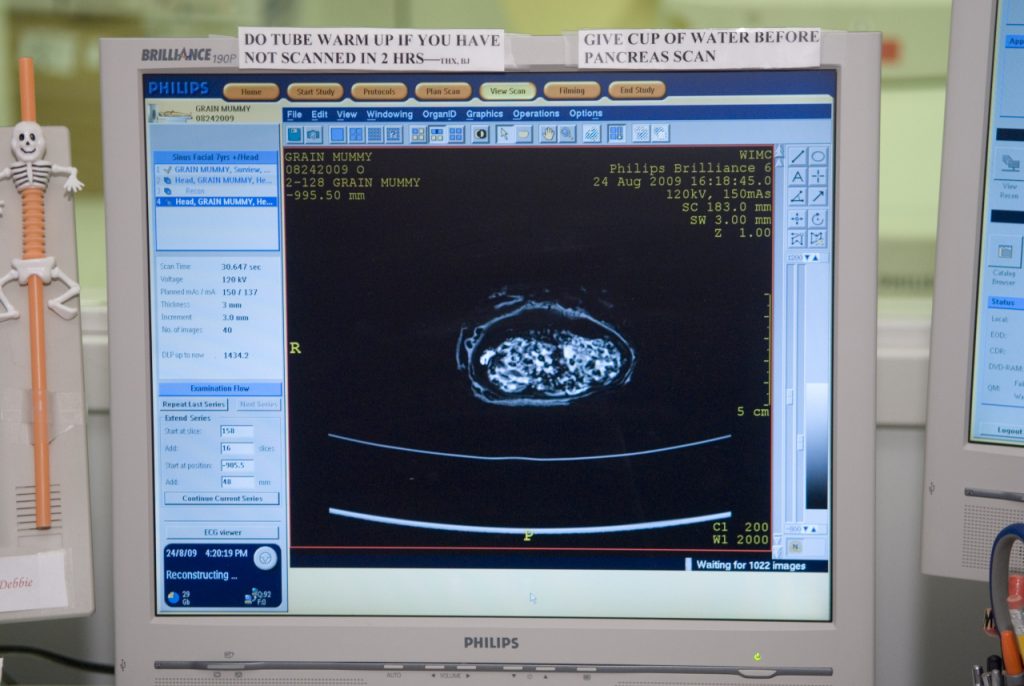Grain Mummy (work of art)
Artwork Info
Key Ideas about this Work of Art
- A grain mummy is a mummy made from Nile mud and grains such as wheat or barley. The purpose of a grain mummy was to serve as a smaller representation of the sacred image of the god Osiris during his festival.
- Osiris is the god of fertility, agriculture, the afterlife, the dead, resurrection, life, and vegetation in ancient Egyptian religion.
- Grains were important in Egyptian culture for their role in people’s diets, as a form of payment, and for their symbolic relationship to the agricultural cycle.
- This grain mummy is encased in a falcon-headed coffin and was initially mistaken for an animal mummy because ancient Egyptians also mummified birds.
Learn More
Grain mummies are made from Nile mud and grains such as wheat or barley, roughly shaped like a mummified human, and wrapped with linen bandages—hence the name “mummy.” Grain mummies serve as sacred images of the god Osiris during his festival. While this one is plain, other grain mummies wear a shroud or have a small wax mask in the image of Osiris wearing a crown.
Because the NCMA’s grain mummy came in a falcon-headed coffin and lacks attributes that link it to symbolic images of Osiris, it was initially mistaken for a falcon mummy—which would also be wrapped in linen and of similar size and appearance.
Bird mummies have been studied more than grain mummies in recent decades. They tend to have fancier wrappings or facial features indicated in ink or appliqués, which are decorative designs made by sewing or gluing pieces of material on top of another material. Current medical technologies reveal what lies beneath the wrappings. X-rays of this grain mummy show a speckled pattern instead of bones, but that doesn’t mean it is a fake.
Priests began preparing grain mummies on the 12th day of the month of Khoiak (mid-October to mid-November), mixing mud, grain seeds, and water from the flood into two gold molds shaped like a mummified person or animal. By the 21st day of Khoiak, grains had sprouted, and the two halves were tied together and dried, to be wrapped the next day.
Grains were important to the Egyptians’ diet. Wheat was used to make bread, while barley was a main ingredient in the brewing of beer. These grains also played a major role in the economy. For landowners grain was wealth, and the associated commodities—bread and beer—served as payment for laborers and could be exchanged for other goods. Even priests were paid with bread and beer; when these were used as offerings to the dead, they were not left in tombs to rot. Grains also had symbolic value and were associated with the annual agricultural cycle as well as with Osiris—in both cases symbolizing life, death, and rebirth.
tags: cycle, environment, ritual, storytelling
Additional Resources
Resources for Teachers
- Listen to NCMA Egyptologist Caroline Rocheleau talk about the discovery of this grain mummy.
- Learn more about Rocheleau’s experiments with creating a grain mummy for an NCMA event.
- Take a look at a corn (grain) mummy.
Resources for Students
- Take a look at another grain mummy.
- Learn about animal mummies.





